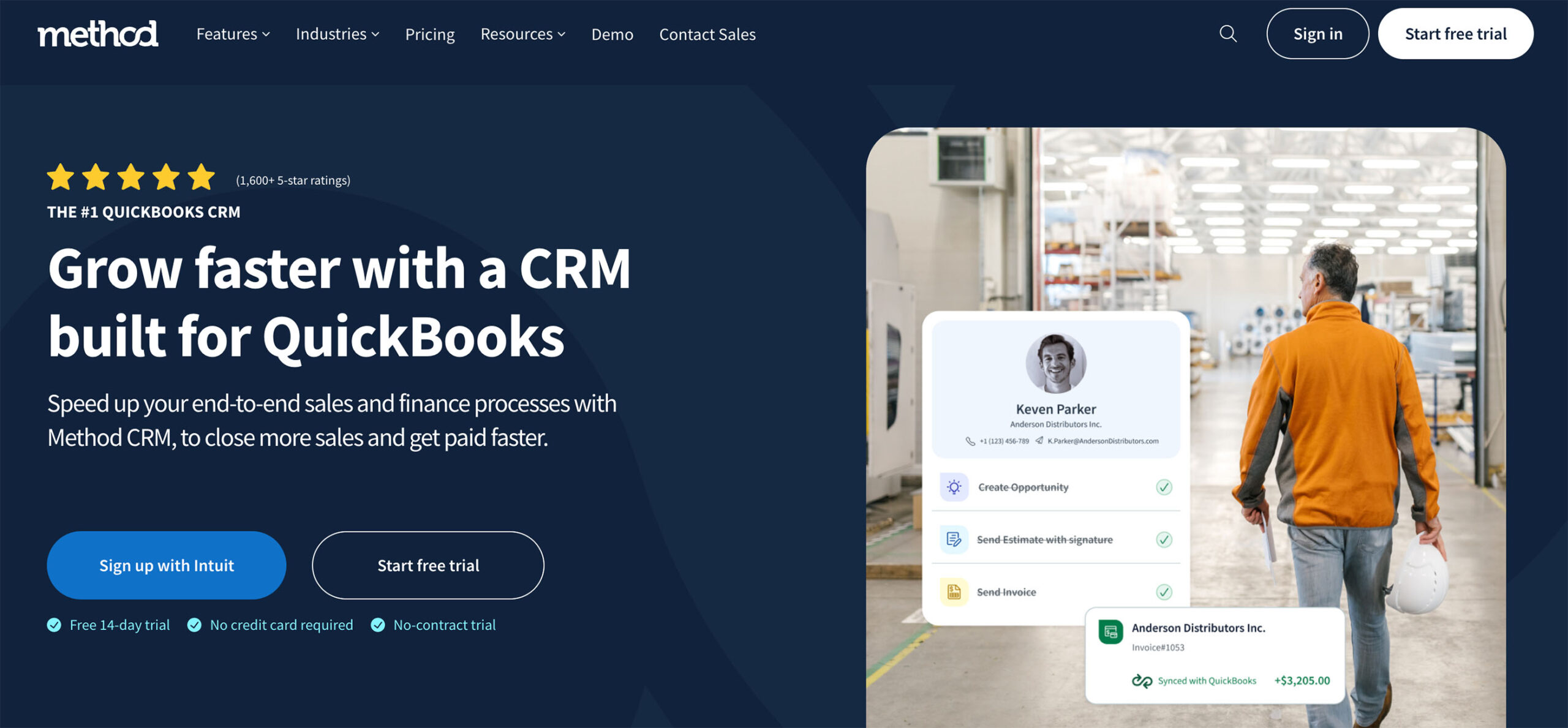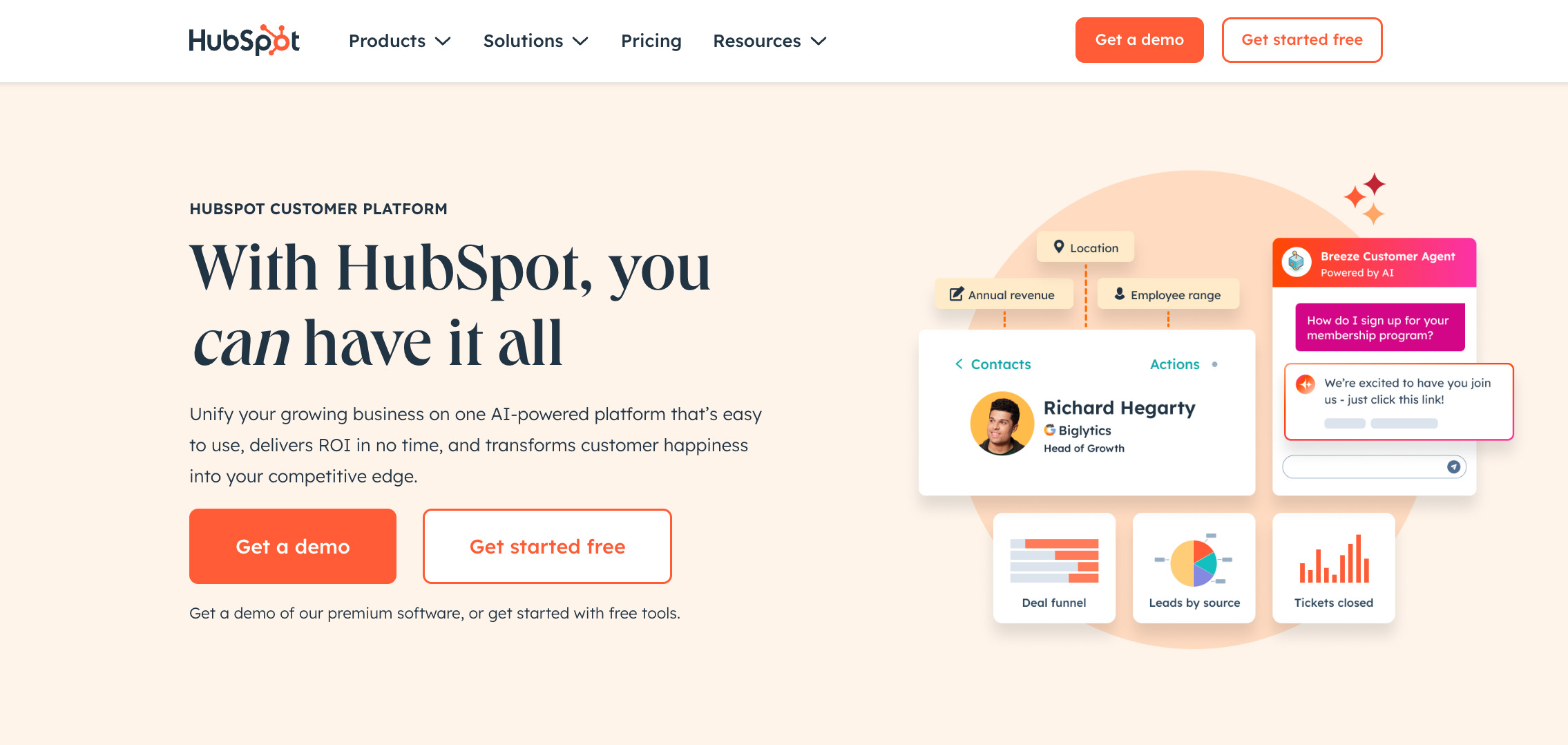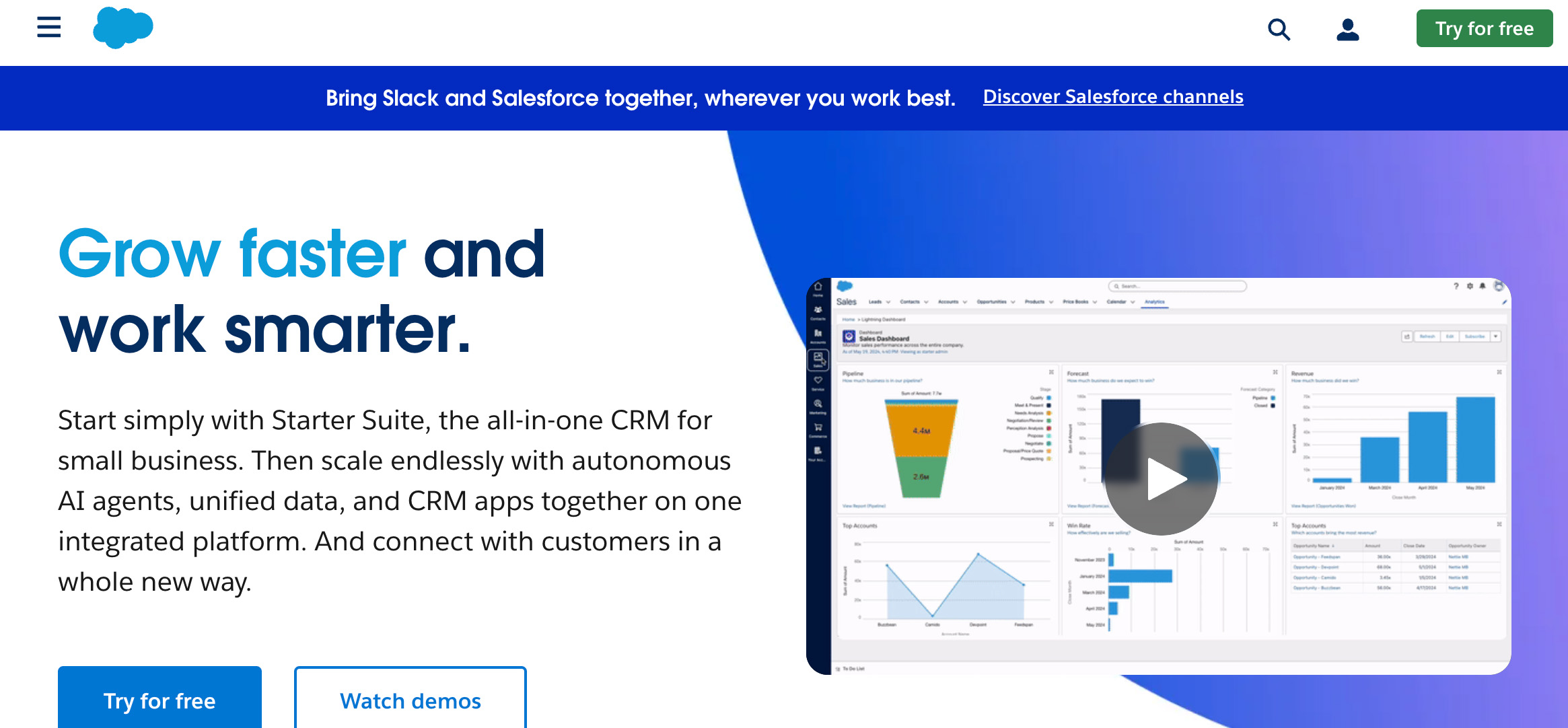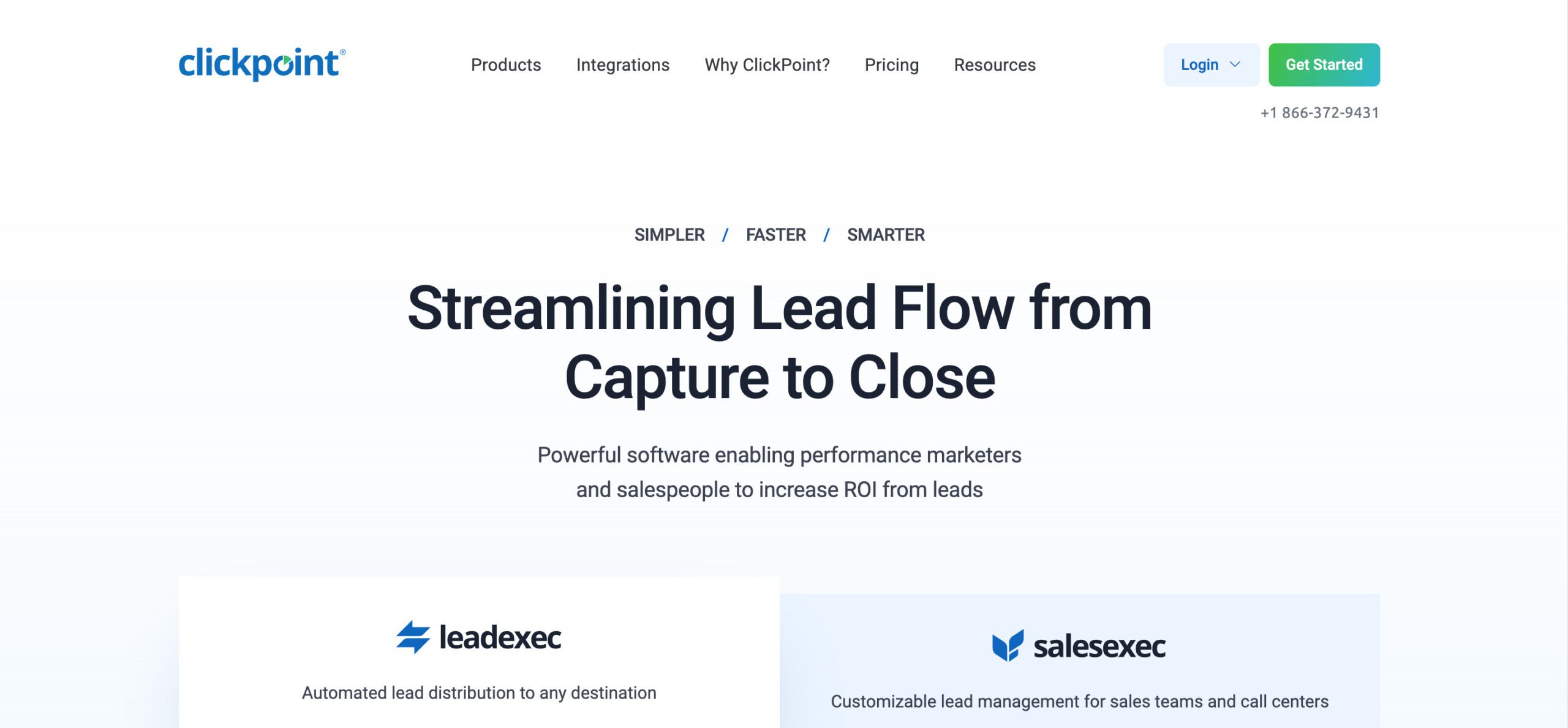Are you still tracking leads using spreadsheets or resorting to emails and sticky notes? Those methods might work initially, but as your sales pipeline expands, keeping pace becomes increasingly challenging. 😫
Missed follow-ups, outdated contact information, and a lack of real-time visibility can slow down your entire sales process, particularly if you’re a small business managing numerous moving parts at the same time.
The right CRM tool should help you organize, track, and nurture leads more effectively without adding administrative burden. 🙌
From automation and email marketing to lead scoring and segmentation, many modern CRM software options consolidate everything into one clear and streamlined view. As a result, your sales team spends more time closing deals rather than chasing details.
Here at Method CRM, we’ve been supporting QuickBooks-based businesses since 2010. Method is loved by small and mid-sized businesses across a range of industries for its real-time, two-way QuickBooks sync, end-to-end sales automation, and no-code customizations. With Method, you can design workflows to precisely match your sales process, capture new leads through web forms or landing pages, and set up automated email campaigns to keep the momentum going. Because everything connects in real time, nothing slips through the cracks. 🔄 🤝🎯🚀
In this guide, we will delve into everything you need to know about selecting the best CRM solution for lead management in 2025, which includes:
- How lead management tools help increase conversion rates, reduce administrative work, and ensure you stay on top of every interaction.
- An in-depth examination of popular platforms like HubSpot, Salesforce, and Method with advice on which might best suit your business needs.
- Discover how to move beyond just lead generation and build genuine relationships with qualified leads through effective segmentation, follow-ups, and smart automation.
Whether you’re a startup organizing your initial round of leads or a growing team frustrated with losing deals due to chaotic systems, you’re in the right place.
Table of Contents
- What is lead management? 👥
- Core features every lead management CRM needs ⚙️
- Step-by-step lead journey inside Method 💻
- Comparing popular CRMs ⭐
What is lead management? 👥
Managing leads isn’t just about gathering contact details. It’s about building genuine relationships with potential customers and helping them through every stage of the sales process.
Lead management refers to the entire system you use to capture leads, keep track of where they are in your funnel, follow up on time, and eventually convert interest into actual business. Think of it as the behind-the-scenes process that keeps everything running smoothly, especially when your team is juggling dozens or even hundreds of leads at once.
Lead management keeps your sales team focused, organized, and consistent. Everyone knows who’s doing what and when, and follow-ups are never forgotten.
The problem is that many businesses still try to manage this process using spreadsheets. It might work in the beginning when your lead list is short and your team is small, but as soon as things start to grow, those spreadsheets can start to hold you back.
Here’s why spreadsheets don’t cut it for lead management:
- There’s no real-time visibility. If one person updates a lead’s details, no one else knows unless they’re told. This can result in confusion, duplicate work, or missed updates.
- Follow-ups often get missed. A spreadsheet doesn’t remind you when to send a follow-up or make a phone call. Without alerts or tasks, it’s much easier to forget important steps.
- There are no integrations. You can’t connect a spreadsheet to your email marketing, CRM software, calendar, or any other tool. That means more manual work and more room for error.
- It can’t scale with you. As you bring in more new leads, your spreadsheet gets more complex. Tabs multiply. Rows get lost. It becomes harder to keep up, not easier.
All of the above can result in delays, missed chances, and a sales team that spends more time trying to stay organized than actually closing deals.
This is why many small businesses opt for a dedicated lead management software. The right tool will help streamline every part of the lead management process. You can capture leads through web forms or social media, assign them to the right rep, automate follow-ups, and track results from one clean dashboard.
And if your CRM system includes features like lead scoring or segmentation, it becomes even easier to prioritize your best sales opportunities. You’ll also be able to keep tabs on lead tracking in real time, which makes it much easier to spot issues and optimize your sales pipeline.
The goal is simple: less stress, more structure, and a smoother path from new lead to happy customer.
Core features every lead management CRM needs ⚙️
Keeping up with new leads can quickly become overwhelming, but a good lead management CRM should make this process easier. No matter what your business structure looks like, here are the core features that will help you stay organized and close more deals with confidence.
1. A clear dashboard and easy contact management
You shouldn’t have to dig through spreadsheets or scroll through endless emails to understand the status of your sales leads. A strong CRM solution should have a central dashboard where you can see your full sales pipeline at a glance.
You’ll know exactly who your potential customers are, when you last spoke to them, and what the next step is to progress each one forward. It could be a phone call, a follow-up email, or a meeting. All your customer interactions should be accessible from a central dashboard. That means fewer dropped balls, fewer delays, and a much smoother sales process overall.
A CRM with proper contact management also helps you build stronger relationships. You can keep track of client preferences, birthdays, company updates, or notes from past conversations so your follow-ups always feel warm and personalized.
2. Automation and simple workflows
Most small business teams don’t have time to chase every lead manually or send reminder emails multiple times per week. For scenarios like these, automation becomes an asset.
With a good CRM, you can set up helpful workflows that handle the repetitive tasks in the background. For example, when a new lead fills out a form on your website, the CRM can automatically assign that lead to a sales rep, send a welcome message, and even schedule a follow-up.
You can also create workflows to:
- Send automated emails to nurture leads who are not quite ready to buy.
- Remind your sales team when it’s time to check in with someone.
- Flag a stalled lead so you can get them back on track.
Sales automation doesn’t replace your team. It supports them so they can focus on real conversations and building trust.
3. Lead scoring and qualification
Lead scoring helps your team prioritize their time by ranking leads based on how likely they are to convert.
Many CRM tools let you set up scoring models based on behaviours like email clicks, website visits, or job titles. You can also add points for actions like attending a webinar or requesting a quote.
Lead qualification works hand-in-hand with scoring. It helps you figure out if a lead is truly a good fit for your business. Focusing on qualified leads helps your sales team spend less time chasing cold contacts and more time closing warm ones.
4. Helpful integrations with tools you already use
A CRM becomes even more powerful when it integrates well with your other software. The best CRM for your business should be a platform that integrates with tools you already rely on, which helps you streamline your workflows and reduce manual data entry.
Look for a CRM that connects with:
- QuickBooks for easy invoicing and job costing.
- Your email marketing software for sending campaigns.
- Web forms and landing pages for capturing new leads.
- Social media platforms to track ad performance and lead capture.
Having these integrations in place means everything works together in real time. You won’t need to copy and paste between apps or wonder where a lead came from. It’s all tracked in one intuitive system.
5. Mobile access and real-time notifications
Whether you’re on a job site, running errands, or meeting a client for coffee, you need your CRM to work wherever you are. That’s why mobile access and real-time notifications are must-haves.
With a mobile-friendly CRM, you can:
- Add notes after a client call.
- Update a contact’s information.
- Schedule a follow-up.
- See your full dashboard and sales pipeline.
Real-time alerts are especially helpful. You’ll get notified the moment a lead opens your email, clicks a link, or requests more information, meaning you can respond right away and stay ahead of the competition.
It also helps your team work more efficiently on the go, keeping everyone in sync without needing to check in constantly.
The bottom line? A lead management CRM should support your team, not slow them down. Look for one with a clear dashboard, built-in automation, smart lead scoring, useful integrations, and real-time mobile access.
Step-by-step lead journey inside Method 💻

Let’s say someone visits your website and fills out a contact form asking for a quote. That’s your new lead. Now what?
Method’s lead management CRM eliminates spreadsheets, manual follow-ups, and the uncertainty of what comes next. In return, you get a streamlined sales process that carries every lead from initial inquiry to completed job and invoice.
Here’s how it works step by step.
Step 1: A web form brings your lead in
Your potential customer lands on your website and fills out a web form, maybe to request a quote, book a call, or ask about your services. With Method’s web-to-lead form setup, instead of disappearing into your inbox or getting lost in a spreadsheet, their details automatically flow into Method’s lead management system.
Instead of manually copying and pasting information, your CRM software captures it in real time, keeping your contact list clean and your sales team ready to follow up.
Step 2: Lead enters your sales pipeline
As soon as the form is submitted, the lead appears in your Method sales pipeline. You can see exactly where they are in the journey — new, contacted, quoted, or ready to close.
You can assign the lead to a specific team member, create follow-up reminders, or even trigger automated emails to keep things moving. These automations help your team stay on top of every opportunity without chasing paper trails.
Method’s workflows are the star of the show here. For example, you can automatically send a “Thanks for reaching out” message and schedule a quote call, no clicks required.
Step 3: Quote, proposal, or job order — it’s your call
Once you’ve qualified your lead, you can quickly send a quote or job estimate right from inside Method. You can also create custom templates that match your services and pricing.
Every action gets tracked, so your team has full visibility. You’ll never be left wondering whether a quote was sent or a follow-up was missed. It’s all there in your dashboard.
Need to update the quote or follow up with more info? Easy. It’s all built to be flexible so you can move fast and keep building relationships.
Step 4: Invoice the client through QuickBooks
Once your customer accepts the quote and the job is done, it’s time to get paid.
Thanks to Method’s QuickBooks integration, you can convert an estimate to an invoice inside Method and send it directly through QuickBooks. Everything stays synced in real time, including customer info, products and services, and payment status.
No duplicate entries. No missing details.
Why QuickBooks users love two-way sync
Method’s instant, two-way sync with Quickbooks eliminates double data entry, keeps your accounting team happy, and gives your sales team instant access to billing updates. You can start in Method and finish in QuickBooks, and everything stays perfectly in sync.
A streamlined experience makes it easier for your sales team to close deals without dropping the ball, no matter how many leads you’re managing. Plus, with built-in integrations and lead management tools all in one place, you’re always a few clicks away from your next win.
Method gives you a lead management CRM that adapts to your workflow, not the other way around.
Comparing popular CRMs ⭐
When you start looking for a CRM solution, it’s easy to get overwhelmed by all the options out there. You’ll find big names like HubSpot and Salesforce, and niche platforms like ClickPoint, with each one offering something different. Yet not every tool fits the way small businesses actually work, especially when QuickBooks is at the center of your operations.
Let’s break down the strengths and limits of some of the most talked-about lead management software platforms.
HubSpot

- Strengths: Excellent for inbound marketing and email campaigns. Their free CRM tier is a strong entry point for startups. You also get tools for marketing automation, lead capture, and dashboards right out of the box.
- Limitations: The free version can get restrictive quickly, especially as your team grows. Features like lead scoring, advanced segmentation, and reporting often require add-ons. HubSpot’s pricing can creep up fast, especially for small businesses looking to scale.
Salesforce

- Strengths: A powerhouse platform built for enterprise-level lead management, complex workflows, and sales automation. Their CRM system can be tailored to a wide variety of industries and has an extensive library of integrations.
- Limitations: Salesforce can feel excessive for small and mid-sized teams. Properly setting it up takes time, training, and often third-party consultants. Some salespeople end up using only a fraction of its functionality while paying for the full package.
ClickPoint

- Strengths: Built with lead distribution in mind. Great for teams that want to route leads based on source, location, or sales rep availability. Strong focus on optimizing outreach and lead response time.
- Limitations: While great for distributing leads, ClickPoint lacks the full CRM depth that growing small businesses may need, especially in areas like customer management, templates, and long-term relationship tracking.
Why Method stands out for QuickBooks users
If you’re a small business using QuickBooks, Method offers something the others don’t: a fully customizable CRM software that fits your exact workflows, not the other way around.
You get lead management tools that are made for growing businesses, with automation that handles follow-ups, invoice creation, and job tracking in sync with QuickBooks. Unlike larger platforms, you’re not paying for enterprise features you won’t use or stuck with a one-size-fits-all setup.
Plus, Method’s Canadian-based customer support and professional services team are always there to help, whether you’re starting out or scaling up. From lead capture to closing deals, Method gives you everything you need to stay organized and grow smarter.
How to choose the best CRM for your business needs 🥇
Choosing the best CRM software can feel like trying to buy the perfect pair of shoes. You want something that fits comfortably, supports your goals, and doesn’t fall apart under pressure. But with so many CRM platforms promising to solve all your problems, how do you pick the one that will actually support your team, streamline your workflows, and grow with your business?
Let’s walk through what really matters when choosing a CRM that suits your business needs.
1. Start by mapping your business workflows
Before looking at flashy features or sleek dashboards, take a step back and map out how your team actually works today.
Ask yourself:
- How do we capture and qualify new leads?
- What does the sales process look like, from first contact to closed deal?
- Where are things getting stuck? Are we missing follow-ups or chasing outdated contact information?
- How do we track customer interactions? Is everything buried in emails and spreadsheets?
Learning your current workflows helps you spot where a CRM can make the biggest impact. Maybe you’re struggling with lead management and follow-ups, or maybe your team needs a better way to move prospects through the sales pipeline. Whatever the case, use those insights as a starting point.
2. Consider your budget and team size
Every business wants value for money. That doesn’t mean choosing the CRM with the lowest price tag, but rather, choosing one that gives you the right functionality at a price that makes sense for your size and goals.
Here’s how to break it down:
- Solo users or small teams: Look for CRMs with flexible pricing tiers. Some platforms offer generous free plans or pay-as-you-grow options.
- Mid-sized teams: You may need more robust features like automation, integrations, and role-based access. Check whether those require upgrading to premium tiers.
- Larger teams: You’ll want advanced customization, multiple pipelines, user permissions, and detailed reporting. Consider long-term scalability and onboarding support.
And don’t forget hidden costs like add-ons, integrations, or paid support. Ensure you are aware of what’s included and what’s going to show up as an extra line item.
3. Prioritize ease of use and team adoption
You could choose the most powerful CRM on the market, but if your team dreads using it, that can pose significant challenges. The best CRM is the one your team actually logs into daily, not the one with the fanciest features.
That’s why ease of use is so important. Look for a CRM with:
- An intuitive layout and dashboard.
- Clear navigation, especially for tracking sales activities and customer details.
- Mobile functionality for on-the-go updates.
- Built-in templates to save time on repetitive tasks.
Tip: Involve your salespeople early in the selection process. Ask them what slows them down or frustrates them in their current workflow. When salespeople feel heard and included, they’re more likely to adopt the new system and make it a success.
And if your team includes field reps or mobile users, make sure the mobile experience is just as smooth as the desktop one. Real-time updates, notifications, and easy access to customer details can make or break productivity on the go.
4. Check for integrations and compatibility
Your CRM shouldn’t live in a silo. It needs to work well with the tools you’re already using, especially if you’re handling accounting, marketing, or customer service elsewhere.
Popular CRM integrations to look for:
- QuickBooks or Xero: For seamless invoicing and financial sync.
- Email marketing tools: Examples include Mailchimp, ActiveCampaign, or Constant Contact.
- Web forms and landing pages: To capture new leads directly from your website.
- Calendar and scheduling tools: Like Google Calendar or Outlook.
- Social media platforms: For lead generation and campaign tracking.
A CRM that connects easily with your core tools helps you streamline processes, save time, and avoid duplicate data entry.
5. Think about customization and flexibility
Your business is unique, and your CRM should reflect that. Look for platforms that let you tailor features to your team’s exact needs without needing a developer.
Key areas to customize:
- Sales pipeline stages.
- Lead scoring rules and follow-up automations.
- Custom fields for contact and company records.
- Workflow triggers based on customer behaviour or internal actions.
- Dashboards that highlight what matters most to each team member.
Some CRMs lock you into their way of doing things. Others allow full flexibility, where you can adjust the structure, automate repetitive tasks, and even design your own templates. Flexibility becomes more important as your business grows and your needs change.
6. Review onboarding and customer support
Even the best CRM comes with a learning curve. That’s why strong onboarding and ongoing support matter more than you might think.
Before you commit, ask:
- Is there a step-by-step onboarding plan?
- Are there tutorials or training videos for new users?
- Can I speak to someone if I get stuck?
- What does customer support look like? Is it through live chat, email, or phone?
- Are support hours aligned with my business hours?
Good support can be the difference between a smooth transition and weeks of frustration. If you’re investing in a CRM to improve your lead management and sales process, make sure the company behind it is just as invested in your success.
The goal of choosing a suitable CRM for your business is to set your team up for success. Start by looking at how you work today, and choose a CRM that complements those workflows, fits your budget, and grows with your business.
If you want a CRM solution that integrates with QuickBooks, supports automation, and adapts to your unique sales process, Method CRM is worth considering. It’s flexible, easy to customize, and designed for small businesses.
Frequently asked questions
Do I really need CRM software for a small business?
CRM software is an asset for small businesses, especially if you’re managing leads, customers, and sales across emails, phone calls, spreadsheets, or sticky notes. A CRM solution helps you stay organized, track every sales lead, and automate follow-ups, saving you time and helping you close more deals.
How does lead management work inside a CRM?
A lead management CRM tracks every step of your sales process, from capturing new leads through web forms or phone calls to qualifying them and assigning follow-ups. You can tag, score, and nurture leads automatically, so no opportunity slips through the cracks.
What’s the difference between CRM and project management software?
CRM software focuses on customer relationships, lead tracking, and the sales pipeline. Project management software, on the other hand, is used for tracking timelines, tasks, and internal team collaboration. Some platforms offer both, but if sales is your main focus, start with a CRM solution.
Can CRM tools help with marketing too?
Absolutely. Many CRMs include email marketing, segmentation, and automation features to help you run smarter marketing campaigns. You can build email campaigns, send automated messages to nurture leads, and track engagement in one centralized place.
What integrations should I look for?
It depends on your setup, but key integrations to look for include QuickBooks (for syncing estimates and invoices), email marketing platforms, web forms, and your preferred calendar or phone system. Method CRM stands out because it’s built with QuickBooks users in mind and keeps your data synced in real time.
Is CRM software hard to set up?
Not with the right support. Method CRM, for example, offers a dedicated onboarding team to walk you through setup, automate your workflows, and train your team so you don’t have to figure it all out alone.
Next steps ➡️
A CRM can feel like a puzzle, but finding the right fit can be surprisingly easy.
If you’re ready to streamline your sales process, manage leads with less stress, and give your team the tools to succeed, start with a CRM that’s built for small business needs.
Method CRM offers a free trial so you can test the platform without pressure. From day one, you’ll get access to a friendly onboarding team that helps you optimize your workflows, integrate with QuickBooks, and automate the busywork.
Want to close deals faster, keep your team in sync, and turn leads into loyal customers? Start your free trial of Method CRM today and take the next step toward building a smarter, more connected business.





